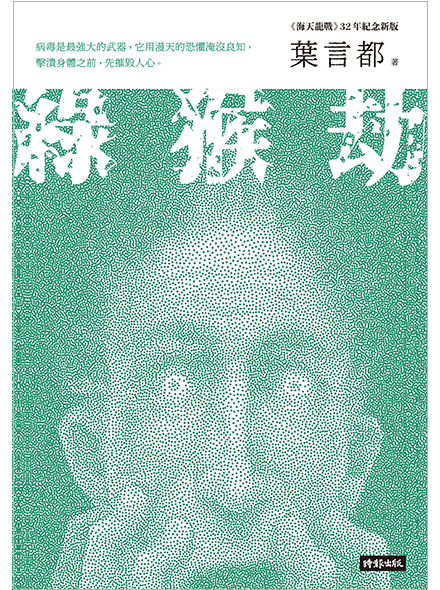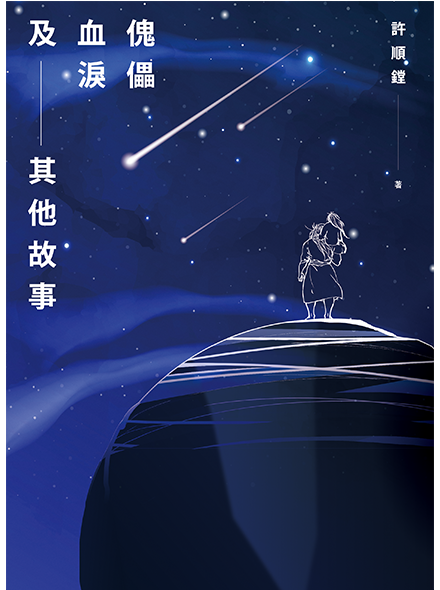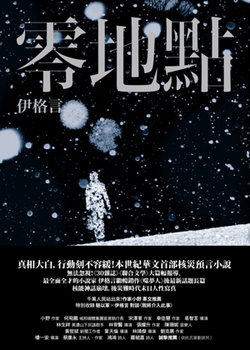Thanks to the success of The Three-Body Problem by Liu Cixin(劉慈欣), over the last few years there has been a surge of interest in Chinese-language sci-fi across the international book market. Taiwan had already developed its own extensive culture of sci-fi writing by as early as the 1980s. This year, Books from Taiwan has chosen to highlight two classics of the genre: Green Monkey Syndrome by Andrew Yeh and The Puppet’s Tears and Other Stories by Isaac Hsu, which gives us the chance to review how Taiwanese sci-fi has developed and been translated over the last forty years.

It would be impossible to have a discussion about authors who represent Taiwanese sci-fi without mentioning Chang Hsi-kuo(張系國). He began writing sci-fi novels in the late 1960s with his contemporaries, such as Chang Show-foong(張曉風) and Huang Hai(黃海), and started translating science fiction from overseas during the 1970s. He introduced many famous, award-winning foreign works to Chinese-language readers and even had a science fiction column in the United Daily News. An anthology called Death of the Sea was published in 1978 and among the writers featured was George R. R. Martin who would go on to become world-renowned for his series A Song of Ice and Fire. It can certainly be said that those early days of translating works from overseas played an important role in the development of Taiwanese science fiction.

The Puppet’s Tears and Other Stories
The 1980s officially ushered in the golden age of Taiwanese sci-fi. Besides authors who were constantly writing and publishing new works like Chang Hsi-kuo and Huang Hai, there were also new authors in this genre. For example, Huang Fan(黃凡) wrote the ground-breaking dystopian novel Zero, which explores serious issues in the stories, and thus gained recognition from the mainstream literary award. The China Times Open Book Award soon had its own sci-fi prize (later renamed the Chang Hsi-kuo Prize for Science Fiction) which helped support many authors including Chang Ta-chun(張大春), Andrew Yeh, Isaac Hsu and Ho Ching-Pin(賀景濱).
By pure coincidence, both Andrew Yeh and Isaac Hsu began to combine martial arts elements with science fiction. While Yeh’s short story “The Ancient Sword” only featured sci-fi themes at the very end, there was a strong sense of science fiction in his writing style. In “The Puppet’s Tears” Hsu combines science fiction with the kind of landscapes and grievances found in wuxia novels, and one can’t help thinking that this was a sign of the long-term developments to come. Elsewhere, Yeh’s other works use grounded sci-fi settings as well as narrative techniques that interlace true and false realities to portray each of his terrifying, eccentric futures. Even though it’s been over thirty years since it first published, his work still coincides with the global trends we’re currently seeing during the pandemic. On the other hand, The Hamlet Trilogy by Isaac Hsu has come to an end after thirty years. Through its depiction of a superpowered AI version of Hamlet, the trilogy has explored the value of human civilization and continues to inspire debate.
At the beginning of the 2000s, Isaac Asimov’s Chinese translator Lee-Hwa Yeh(葉李華) established the Centre for Science Fiction at National Chiao Tung University and it seemed as though Taiwanese sci-fi was about to reach another peak. However, other than periodically hosting the Ni Kuang Science Fiction Award and a seminar, the research centre’s influence is relatively limited.
Recent developments in Taiwanese sci-fi can be broadly divided into two categories. The first consists of mainstream writers using sci-fi settings as narrative techniques or background stories so they can explore a diverse range of issues. For example, the ocean trash vortex that attacks in Wu Ming-yi’s The Man with the Compound Eyes is a background element in a story that explores environmental issues and Taiwan’s experience as an island. Similarly, Ground Zero by Egoyan Zheng is set in Taiwan during the wake of a nuclear disaster, while Lou Yi-Chun’s(駱以軍) novels Daughter and Ming Dynasty explore themes of identity and separation through his personal complex writing style, taking a meta perspective to subvert readers’ perceptions of science fiction as a genre.

The second category features works which blend sci-fi with local culture and other genres such as fantasy or crime fiction. Ocean Hordes Press, which takes its name from Li Wu-Hsun’s popular Ocean Hordes series, is dedicated to promoting original Taiwanese sci-fi and fantasy works. Elsewhere, the website PanSci launched the PanSci Award in 2018 which has become a crucial new component in Taiwan’s developing sci-fi scene. There are also some excellent translations of foreign sci-fi works on the market including modern classics such as Foundation by Isaac Asimov and the dystopian novels of Ursula K. Le Guin, as well as works from the “New Weird” genre that’s developed in the twenty-first century, and various award-winning books by Chinese-American writers like Ken Liu(劉宇昆) and Ted Chiang(姜峯楠). Readers undoubtedly have a wide range of choices when it comes to science fiction today.
Read on: Translating Taiwanese Science Fiction: Past and Present (II)